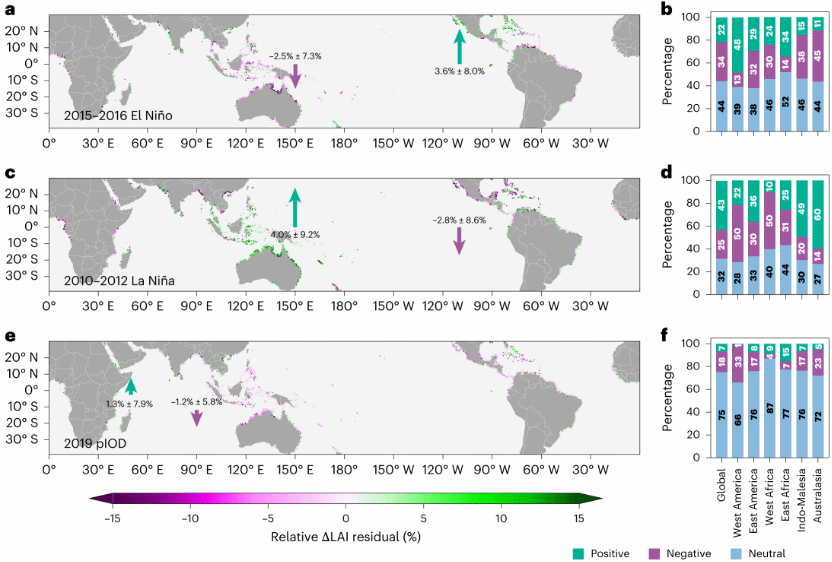Abstract
Mangroves are a carbon-dense and highly productive ecosystem but can experience massive dieback under environmental extremes. Climatic oscillations, such as the El Niño–Southern Oscillation (ENSO), are major drivers of global climate variability, yet their impact on mangrove growth at the global scale remains uncertain. Here, using long-term satellite observations from 2001 to 2020, we show that more than 50% of global mangrove areas experience significant variations during ENSO events, exhibiting a seesaw-like pattern across the Pacific Basin where mangrove leaf area decreases in the western Pacific but increases in the eastern Pacific during El Niño, with the reverse occurring during La Niña. The Indian Ocean Dipole affects mangroves across the Indian Ocean similarly but with a lower magnitude relative to ENSO. These patterns are driven by corresponding sea-level fluctuations across the Pacific and Indian ocean basins, with local contributions from lunar nodal cycles. Our study highlights the crucial role of short-term sea-level fluctuations driven by climatic oscillations in dominating the variability of coastal wetland growth and, consequently, in influencing the blue carbon sink.

Z. Zhang, X.Z. Luo, D. A. Friess, Y.F. Li. Global mangrove growth variability driven by climatic oscillation-induced sea-level fluctuations. Nature Geoscience. doi: 10.1038/s41561-025-01701-8
https://doi.org/10.1038/s41561-025-01701-8